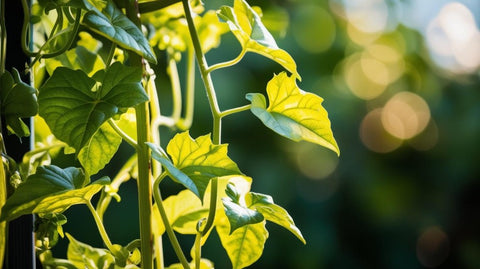Vine Growth Through the Year and the Impact of a Northerly Climate
Vines, particularly grapevines, follow a distinct annual cycle of growth that is heavily influenced by climate, particularly in temperate regions such as the UK. Understanding the stages of vine development and how they respond to environmental conditions is key to successful viticulture.
The vine’s year begins in late winter, typically around February or March, with pruning. This is a crucial process, setting the framework for new growth and influencing the potential yield. Although the vine appears dormant during this time, it is conserving energy below ground, readying itself for the growing season.
As temperatures rise in spring (March to May), the vine enters budburst. Tiny green buds begin to swell and eventually open, revealing the first signs of new shoots and leaves. In warmer regions, this happens earlier, but in a northerly UK climate, budburst may be delayed until mid to late April. This delay can be beneficial, as it reduces the risk of young shoots being damaged by late frosts — a common hazard in northern areas.
By late spring and early summer (May to July), the vine moves into rapid vegetative growth, producing shoots, leaves, and eventually flowering. Pollination and fruit set follow shortly after. Northerly climates can affect these stages significantly. Cooler temperatures and increased rainfall can reduce flowering success and hinder fruit set, resulting in lower yields. Growers in the north often have to manage canopy growth carefully to maximise light exposure and air circulation, countering the effects of a shorter, less intense summer.
Veraison, the onset of ripening, occurs from late July through August. The grapes soften and change colour, and sugar accumulation begins. In more southerly regions, this process benefits from extended sunshine and warmth, but in northern areas, ripening can be slow and incomplete without a favourable late summer and early autumn. Cool and wet conditions may also promote disease, such as mildew or botrytis, posing further challenges.
The final phase is harvest, usually in September or October, though this may be pushed later in the north. The decision to harvest is a balance between ripeness, sugar levels, and acidity. In northern climates, grapes may retain higher acidity and lower sugar, influencing wine style – often producing fresh, crisp whites or sparkling wines. However, achieving full ripeness can be a gamble, especially in poor weather years.
Following harvest, the vine gradually enters dormancy again. Leaves fall, and the plant conserves energy, returning to rest through the cold winter months.
In summary, while vines can be grown successfully in northern UK climates, the growing season is shorter and more variable. Late frosts, cooler summers, and early autumn rains all pose risks. However, with the right varietal choices, careful site selection, and skilled management, vineyards in the north can still produce high-quality wines, often with unique, terroir-driven character. Climate change has even begun to open up new possibilities for vine growing further north than ever before.





